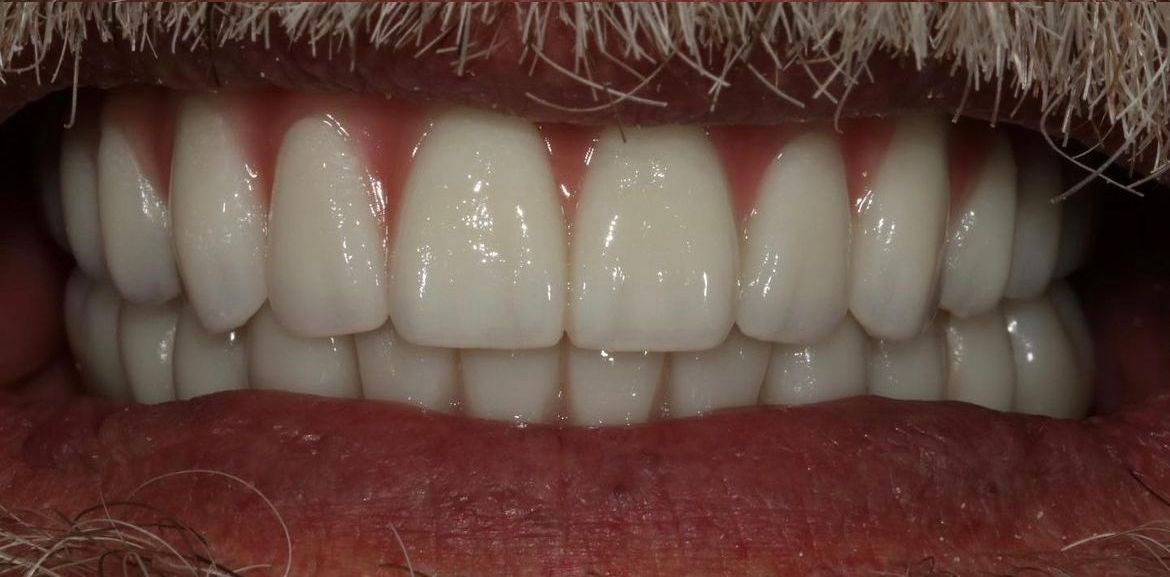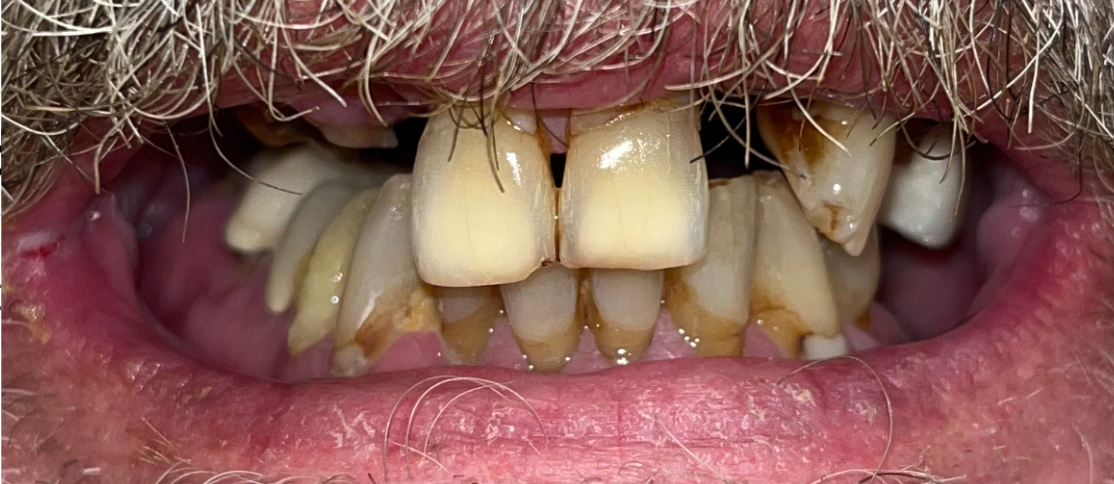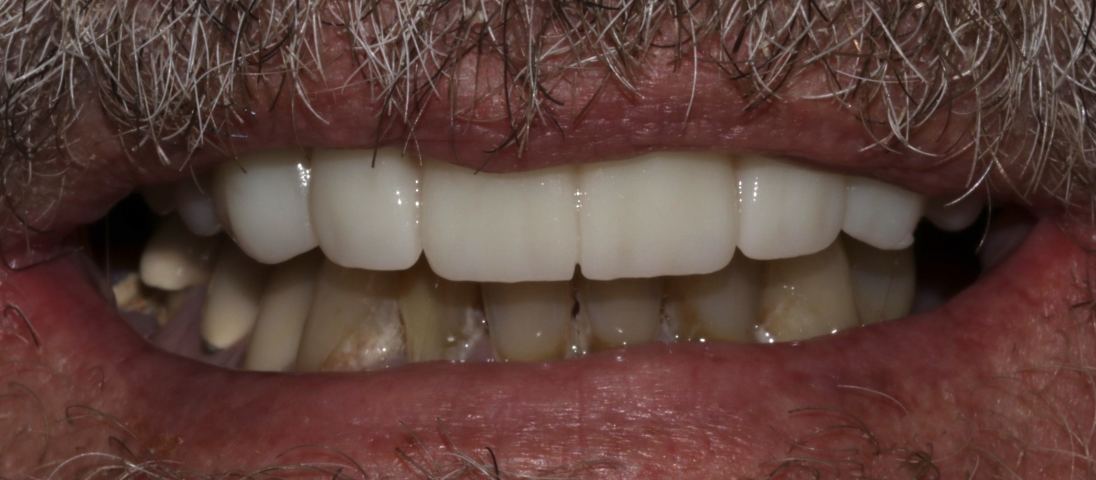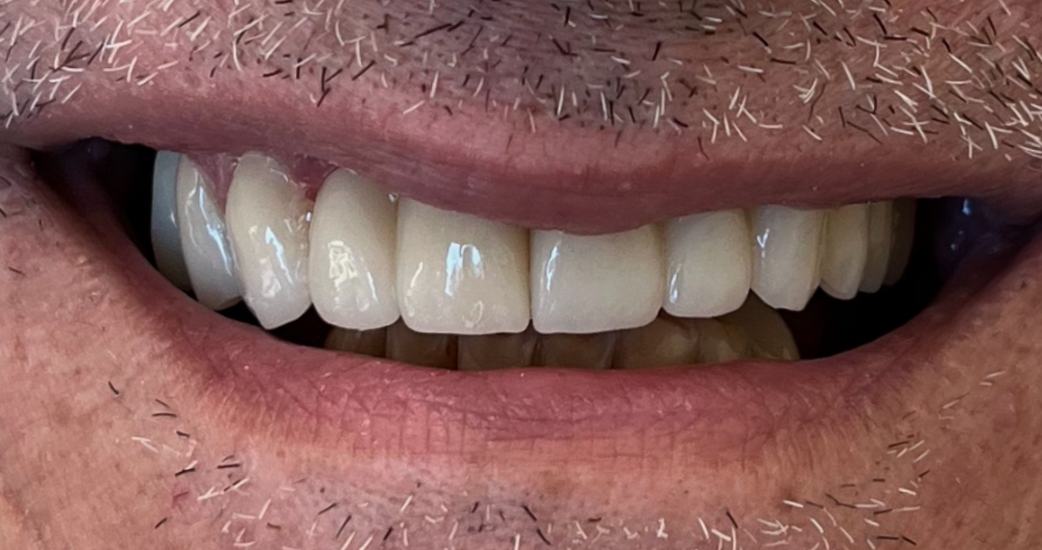Implant Dentures
People who have lost most or all of their teeth often choose to get dentures that are held in place by implants. They are better than traditional dentures because they are more comfortable, stable, help with speech and eating, look better, and keep your mouth healthy.
One of the primary benefits of implant-supported dentures is that they are much more comfortable and stable than traditional dentures. Traditional dentures rest on your gums, which can be uncomfortable, and they can move around, causing irritation and sore spots. On the other hand, implant-supported dentures are held in place by dental implants that are fused to your jawbone. This makes them safer and more comfortable. This also means that they won't fall off or move around while you talk or eat, which makes it easier to talk and eat.


Implant Denture Benefits
Natural tooth-like feel
Enjoy all your favorite foods
No dental glue required
A long-term proven solution


Dentures that are held in place by implants also look more natural and can be made to fit your mouth and face. Because they don't stimulate your jawbone, traditional dentures can make your face look sunken or old over time. Implants, on the other hand, are like fake tooth roots. They stimulate the jawbone and help it grow in a healthy way.
It may seem hard to pay for implant-supported dentures, but there are ways to make them more affordable. Many dental offices offer financing plans with low or no interest so that the cost can be spread out over time. Also, some insurance plans may cover a portion of the cost of implant-supported dentures, so it's important to check with your provider.
Getting dentures that are held in place by implants usually takes more than one step. First, you will need to talk to your dentist about whether implant-supported dentures are right for you. During this appointment, your dentist will look at your teeth, gums, and jawbone to figure out how healthy your mouth is and talk to you about your options.
If your oral health is good enough for implant-supported dentures, the next step is to take out any remaining teeth. Most of the time, this is done with local anesthesia to make it as painless as possible. After the teeth are taken out, the gums and jawbone need time to heal.
The dental implant surgery can happen after the healing period is over. This is done by putting the implants into the jawbone. The implants will hold the denture in place. How many implants you need will depend on how many teeth are missing and how healthy your jawbone is.
After the implants are put in, the jawbone needs time to heal so that the implants can fuse with it. This can take several months, during which time a temporary denture may be worn.
Once the implants have fully fused with the jawbone, the final step is the placement of the implant-supported denture. The denture will be made to fit your mouth, and the implants will hold it in place. Once the denture is in place, your dentist will make any changes that are needed to make sure it fits well and stays in place.


In summary, implant-supported dentures are a preferred option over traditional dentures because of their improved comfort, stability, speech and eating ability, appearance, and oral health benefits. Financing options are available to make them more accessible, and the process of getting implant-supported dentures involves several steps, including the removal of remaining teeth, dental implant surgery, and the placement of the final denture. If you're thinking about getting implant-supported dentures, talk to your dentist to find out if they'll work for you and to talk about your other options.
Full-Arch Implant FAQs
What are full-arch dental implants?
Full-arch implants (often called All-on-X or hybrid implants) are a treatment where 4–6 dental implants are placed in the jaw to support a full set of fixed teeth. Instead of replacing every missing tooth with its own implant, we anchor a whole arch of new teeth on just a few implants.
How are full-arch implants different from dentures?
Traditional dentures rest on your gums and can slip or feel loose. Full-arch implants are fixed in place and attached to implants anchored in your jawbone. They feel more natural, don’t come out at night, and let you chew and smile with confidence.
Am I a candidate for full-arch implants?
Most people missing multiple teeth or struggling with dentures are candidates. We evaluate your bone quality, gum health, and overall health. Even if you’ve been told you don’t have enough bone, modern techniques like angled implants or bone grafting may make it possible.
How long does the procedure take?
In many cases, we can remove bad teeth, place implants, and attach a fixed temporary set of teeth all in one day. The final permanent teeth are usually placed a few months later after the implants fully heal.
Do Full-Mouth Implants Hurt?
The procedure is done under anesthesia (IV sedation or general), so you won’t feel pain during surgery. Most patients are surprised at how manageable the recovery is—typically some soreness and swelling for a few days.
How long do full-arch implants last?
With good care, implants themselves can last decades or even a lifetime. The prosthetic teeth (bridge or hybrid) may need maintenance or replacement every 10–15 years depending on wear. Regular checkups and cleanings are essential.
What do full-arch implants cost?
Costs vary depending on your case, the number of implants, type of final prosthesis (acrylic vs. zirconia), and whether bone grafting or extractions are needed. On average in the U.S., treatment runs $20,000–$35,000 per arch. We’ll provide a custom treatment plan and financing options.
How do I care for full-arch implants?
- Brush twice daily like natural teeth
- Use a water flosser to clean under the bridge
- See your dentist regularly for cleanings and checkups Proper hygiene is key to avoiding gum inflammation and protecting your investment.
Will I be without teeth during treatment?
No. We provide a fixed temporary prosthesis on the same day as surgery in most cases, so you leave the office with a new smile immediately.
What are the benefits of full-arch implants?
- Strong, fixed teeth that don’t move
- Restores ability to eat most foods
- Preserves jawbone and facial structure
- Improves confidence, smile, and speech
- Long-term solution compared to dentures
What is the difference between a PMMA milled vs. zirconia milled bridge?
- PMMA (Polymethyl methacrylate): A strong acrylic material often used as a temporary bridge. It looks natural, is lightweight, and is ideal during the healing phase. However, it’s not designed to last forever and can wear or stain over time.
- Zirconia: A ceramic material that is extremely strong, durable, and resistant to chipping or staining. Zirconia bridges are typically the final, long-term solution. They look highly aesthetic, feel natural, and can last 10–15+ years with proper care.
In simple terms: PMMA is like a “high-quality temporary,” zirconia is the “permanent smile.”
How long is the healing period?
- Most patients are able to leave surgery with a fixed temporary bridge the same day.
- The implants themselves take about 3–6 months to fully integrate (bond) with your bone — this is called osseointegration.
- During this time, you wear your temporary bridge. Once healing is complete, we replace it with your final zirconia bridge.
What kind of foods are off limits after treatment?
- First few months (while healing): Stick to soft foods. Think scrambled eggs, yogurt, fish, mashed potatoes, pasta, smoothies, etc. Avoid hard, crunchy, or chewy items like nuts, steak, raw carrots, or sticky candy.
- After final bridge: You can eat most foods again — even steak or crunchy vegetables. But it’s smart to avoid biting ice, very sticky candy, or using your teeth as tools, since those can damage even natural teeth.
What happens if one of my implants does not take?
- Implant “failure” is rare, but if one does not integrate, we have options:
○ Replace the implant after healing.
○ Use additional implants if needed for support.
○ Modify the bridge to remain stable while healing.
- In most cases, the issue can be corrected and patients still move forward successfully with their treatment plan.
What should I expect for the first week after surgery?
- Day 1–2: Swelling, minor bruising, and some soreness are normal. We’ll prescribe medication to manage discomfort.
- Day 3–4: Swelling usually peaks, then begins to improve. Eating soft foods and resting is important.
- Day 5–7: Most patients feel significantly better, swelling decreases, and they can resume light activities.
- You’ll wear your temporary fixed bridge during this period, so you won’t be without teeth.









